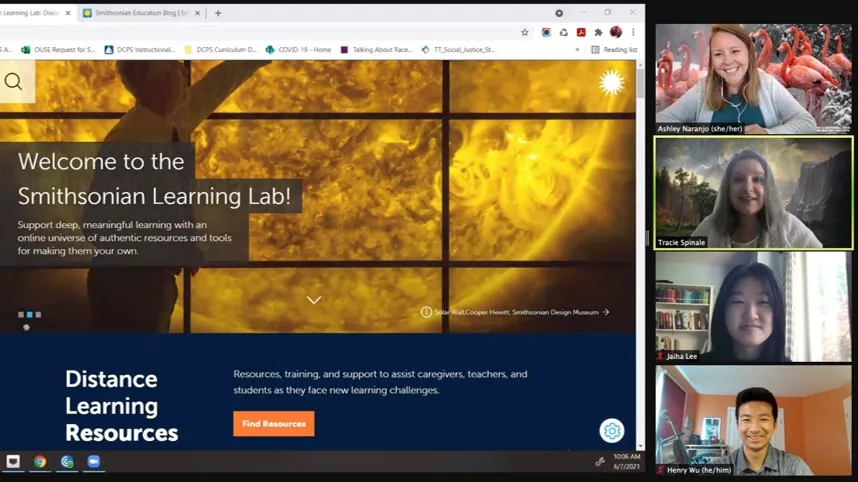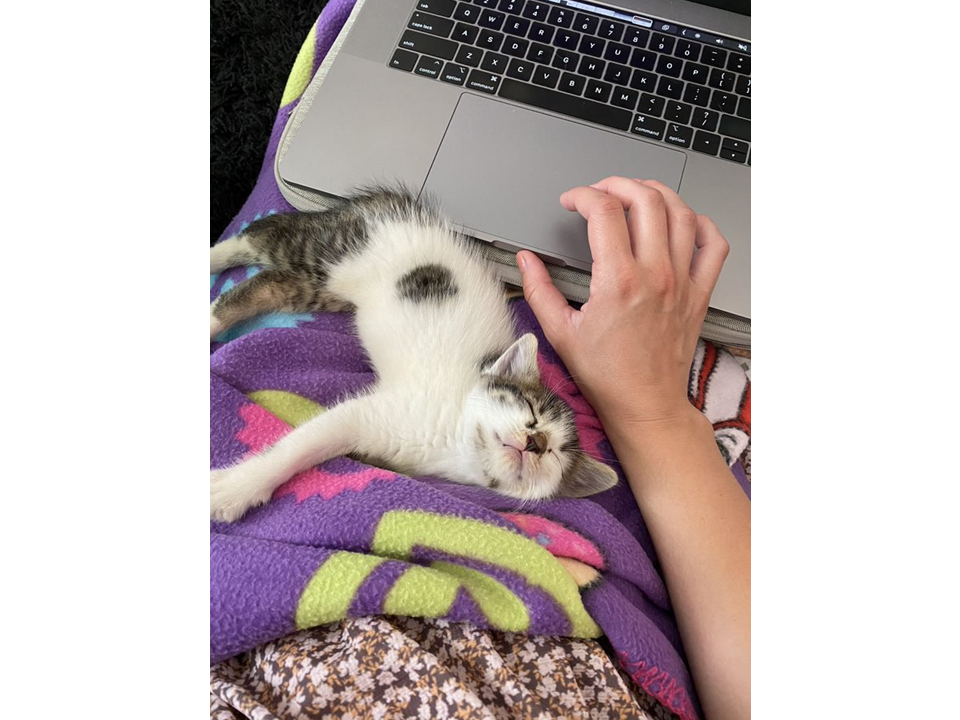Can Remote Internships Be a Best Practice Instead of a Band-Aid?
The Smithsonian’s Office of Internship Programs reimagines the expanded opportunities remote internships can provide
:focal(657x592:658x593)/https://tf-cmsv2-smithsonianmag-media.s3.amazonaws.com/blogging/featured/Angel1.png)
As vaccinations rise and COVID-19 rates fall, what does “a return to normal” look like? It’s a question we’re asking in our homes, schools, and workplaces. For the past fourteen months, most of us have been looking forward to the day when life and work will more closely resemble what it was in February 2020. In the Smithsonian Institution’s Office of Internship Programs, we’re taking advantage of this time of transition to rethink what normal can mean, and to explore how we can apply lessons from the pandemic to our work moving forward.
Internships have always played a vital and valued role at the Smithsonian and its purpose of the increase and diffusion of knowledge. In 2019, the Institution hosted over 2,000 interns. Pre-pandemic, virtual museum internships were the exception, not the norm. Much museum work is traditionally done onsite, where staff and interns alike can interact with visitors and collections. While there are plenty of roles in the museum field that can be completed remotely, virtual internships were only offered for one dedicated virtual internship program, in partnership with George Mason University and Smithsonian Associates: the Smithsonian-Mason Graduate Certificate in Digital Public Humanities Internship Program.
The students in GMU’s Digital Public Humanities Graduate Certificate program explore how they can use the specific tools and opportunities available to develop a project that makes best use of the digital terrain. For example, an in-person museum exhibit might consist mostly of objects, photos, and labels describing both. An online version of that same exhibit, however, could make use of all kinds of digital tools like the ability to zoom in on and rotate 3D scans of objects, links to supplemental audio and video, or ways for the audience to engage with each other or add their own perspectives.
In the same way that digital projects work best when they are built specifically for a digital environment, virtual internships work best when they are planned specifically to be virtual. But because the pandemic took the world by surprise, our internship hosts didn’t have time to be intentional about how we could transition our internships from in-person to virtual. So now we are looking backwards to determine how to move forward. What have we learned from this past year that we want to continue? Should virtual internships play a larger role at the Smithsonian long-term?

We’re still figuring out the answers to some of these questions as we evaluate current and recent intern experiences, working in teams to assess how we think about internships. But one thing that has become clear as we start to examine the virtual intern experience is that it expands who can be an intern at the Smithsonian. There are so many reasons why someone might not be able to travel to Washington, D.C. (or one of our other Smithsonian locations) for an internship—financial concerns, family obligations, health issues—that removing that relocation requirement opens the possibility of a Smithsonian internship for a large group of people. As we transition out of the pandemic, the Office of Internship Programs is committed to making changes that will lead to meaningful increases in diversity, inclusion, accessibility, and equity. Including virtual internships in our “new normal” would help us to achieve that goal. But are virtual internships on par with the onsite Smithsonian internship experience? We have some data from National Museum of American History Interns & Fellows Program Manager Caroline Fiertz, who shares the following:
Not only have our virtual internships continued to provide new perspectives about museum work for emerging museum professionals, but we have also been able to break down barriers for interns who have expressed that they wouldn’t have been able to participate in a more traditional in-person internship, including interns who are caregivers and interns with disabilities and chronic illnesses who wouldn’t be able to relocate to D.C. for a semester. At the beginning of our internship semesters, many interns have understandably expressed initial apprehension about being virtual, and then throughout and at the end of their tenures have emphasized that being virtual totally exceeded expectations; for example, one of our virtual interns stated in an exit survey, “At the beginning I was unsure of what to expect out of a digital internship; however, this experience was incredibly meaningful and more engaging than I could ever have expected.” Our virtual interns are also having equally valuable experiences as our in-person interns, even though the format is so different. According to our program evaluation, 95% of our virtual interns report that they’ve learned about the different facets of museum work and that they achieved the objectives they’d set for themselves during their experience. Additionally, over 90% of our virtual interns also report that they participated in meaningful learning frequently if not every day of their internship, which matches the reports from our in-person internships, and 100% of our virtual interns report that the experiences that they had learning from and collaborating with museum professionals contributed to their academic and/or career goals.

Moving forward, the Office of Internship Programs will be intentional and deliberate about how to incorporate virtual internships in a way that expands opportunities for groups previously unable to intern, while retaining the engaging learning experiences that define a Smithsonian internship. We’re looking forward to establishing a “new normal” that incorporates the lessons we’ve learned during the pandemic, instead of just returning to business as usual.

